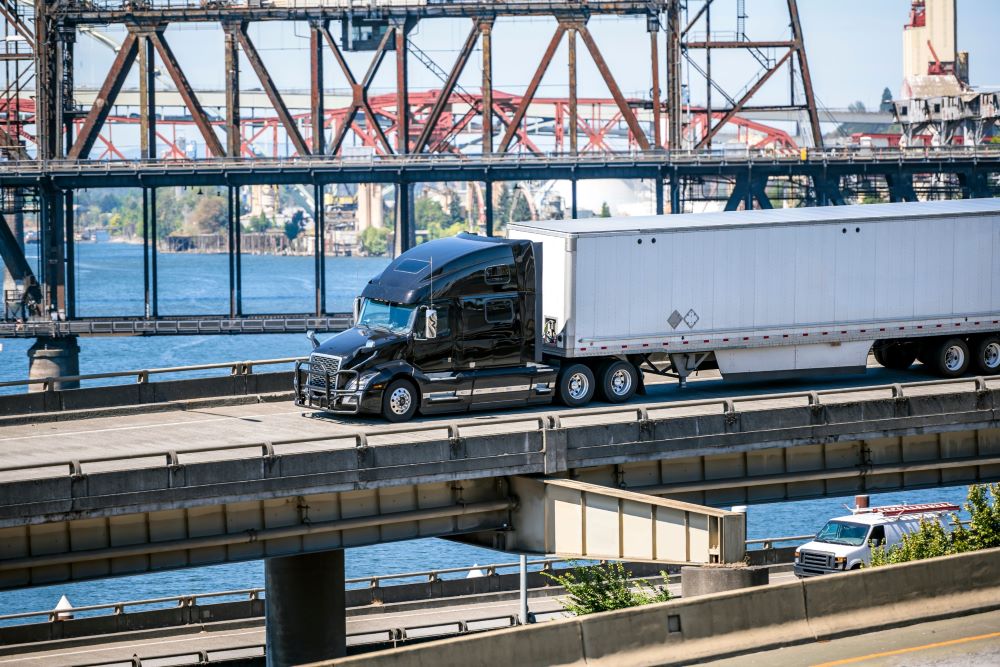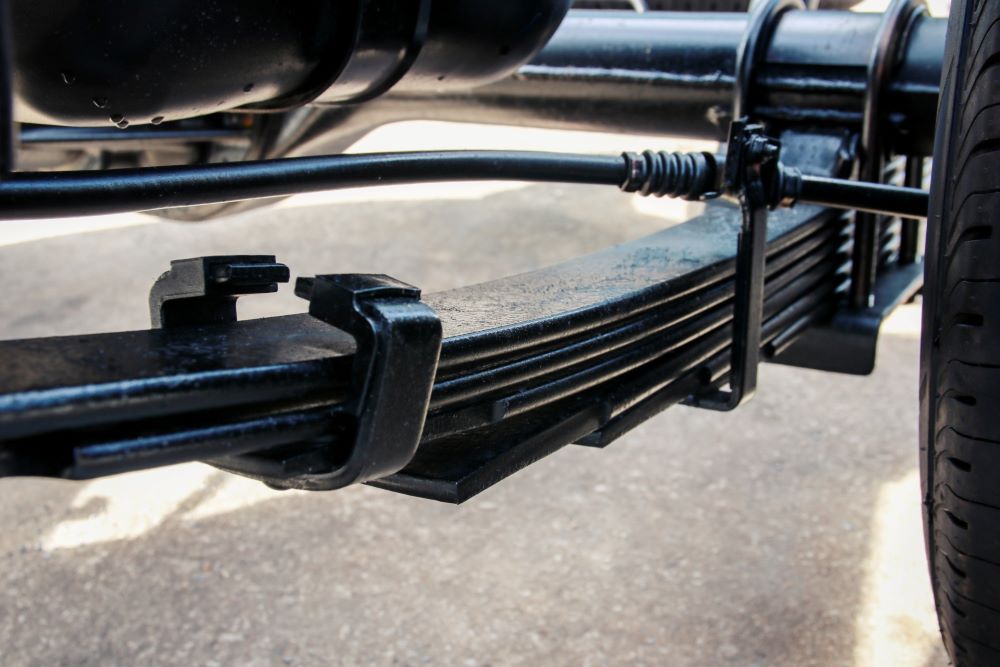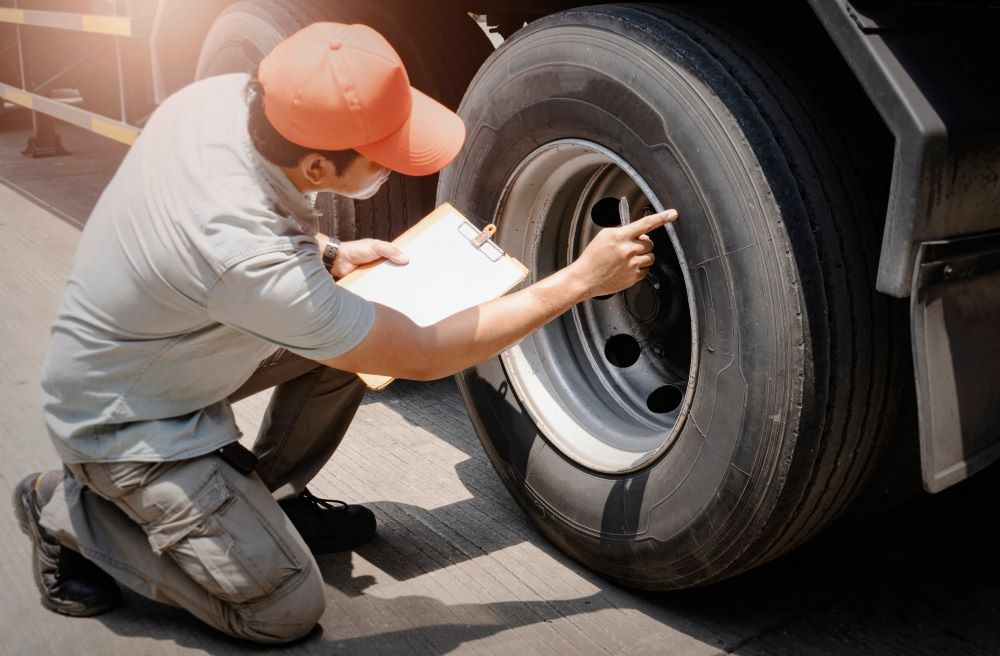
OTR, or over-the-road trucking, is a lucrative career in the trucking industry that involves transporting goods over long distances, often across state lines or international borders.
The job requires significant commitment and adaptability. Drivers must cover vast distances while adhering to strict hours of service regulations for safety.
If you’re considering a career in OTR trucking, this guide covers what the role entails, key aspects of operations, average earnings, and both the benefits and challenges, along with tips for success.
What is an OTR Truck Driver?
Also commonly referred to as a long-haul trucker, an over-the-road truck driver is a trucker who spends long periods–approximately 300 days annually–on the road. They transport freight over long distances, from coast to coast, within the U.S. and overseas to Mexico or Canada. OTR drivers differ from other types of truck drivers, including regional and local truck drivers, in various ways:
- OTR truck drivers often spend several consecutive weeks or months on the road. In contrast, regional truck drivers spend 1-2 weeks on the road at a time, and local truckers return home daily.
- As an over-the-road truck driver, you can operate alone as a solo driver or in teams of two as a team driver, whereas your regional and local counterparts can only work as solo drivers.
- You’ll likely transport fewer loads over longer distances in OTR or long-haul trucking. However, in regional trucking, drivers move more goods over shorter distances. Conversely, most local drivers transport less than truckload (LTL) shipments.
- OTR drivers typically operate on interstate highways, whereas regional truckers operate on highways plus local roads, and local truckers mostly use smaller, local roads or streets.
- Expect to cover approximately. 1,200 to 1,400 miles for a typical over-the-road trucking load. Although, you may sometimes travel over 3,000 miles per trip, especially if you’re transporting goods from the West to the East Coast.

How Much Do OTR Truck Drivers Make?
The latest salary estimates from PayScale reveal that OTR drivers earn an average salary of $64,409 annually, with a typical range of about $42,000 – $91,000.
Earnings vary widely based on freight type, expertise, location, and employer. Independent owner-operators earn more than company OTR truckers because of control over rates and schedules. Many drivers make between $24 and $44 per hour or more.
Core Elements of OTR Operations
Understanding the core elements of conducting smooth OTR operations is crucial to becoming a successful OTR trucker. Overall, three fundamental elements play a vital role in ensuring your over-the-road trucking operations are efficient:
- Vehicle types. Almost all OTR trucking operations require large and heavy vehicles designed for long-distance hauling. These include full trucks or semi-trucks. When choosing between a semi-truck vs. a full truck, always consider your cargo size and long-haul route requirements.
- Route planning. Proper route planning helps you identify efficient routes that can save time and reduce fuel costs while ensuring timely deliveries. This requires you to consider several factors, such as weather, traffic, and the state of the road.
- Scheduling. An OTR trucker must create their schedule meticulously to make the most of their on-duty hours. Most truckers, especially new drivers, time their activities, including breaks and rest periods, to minimize time wastage and earn more.
Advantages of Long Haul Driving
Even though long-haul trucking keeps drivers away from their family and friends for extended periods, many prefer this career path over local or regional trucking because of the following advantages:

- Lots of Trucking Jobs–job opportunities for heavy and tractor-trailer truck drivers are projected to grow by 4% through 2032, without about 241,200 openings annually. This makes OTR trucking a high-demand career.
- Higher Salary in Over-the-Road Trucking–OTR trucking pays more than regional and local trucking because of the long hours spent on the road and the skills required to manage long-haul trucking operations. Drivers must know the logistics and be well-prepared for unexpected situations on the road.
- Chance to See the Entire Country–compared to regional and local trucking, OTR trucking provides unmatched travel opportunities. Drivers enjoy spectacular views and see several tourist attractions when moving from coast to coast and get paid for it.
- Flexibility of Over-the-Road Trucking–OTR truckers enjoy some independence that regional and local drivers don’t. The employer cannot monitor every step you make when traveling for extended periods.
The Challenges of Being an OTR Trucker
- The Federal Motor Carrier Safety Administration (FMCSA) introduced the ELD mandate to ensure drivers adhere to the hours of service regulations. This can disrupt OTR trucker schedules, adding pressure to meet strict regulatory provisions and making it challenging to manage driving hours effectively.
- Navigating areas with poor roads can lead to detours, delays, and increased wear or tear on vehicles. All these affect an OTR trucker’s efficiency and job satisfaction.
- Unpredictable weather makes it hard for truckers to maneuver, affecting their trucking operations.
- Time spent waiting at pickup docks or delivery centers, often called being in detention, can reduce OTR truckers’ earning potential. The delay eats into truckers’ valuable driving time, and there’s no compensation.

- Extended time away from family and friends can lead to loneliness, emotional strain, and mental health challenges. The demands of OTR trucking also disrupt work-life balance, impacting overall well-being. Here are a few tips to help you protect your mental health and well-being as an OTR truck driver.
- Long-haul truckers often face chronic back pain and other musculoskeletal issues from extended periods of sitting. To stay fit and healthy on the road, consult our guide for practical tips on maintaining physical health while trucking.
Final Thoughts
OTR driving is one of the most rewarding careers in the trucking industry. It’s also one of the most complicated jobs because it’s a lifestyle that requires a specific mindset to maintain.
Besides having a commercial driver’s license and a clean driving record, truckers require several essential attributes and skills to prosper in the field. Some of these include appreciation for travel, resilience, love for solitude, flexibility, and the skillset to operate different tractor-trailers.
For additional tips on succeeding in the trucking industry, check out our blog. Contact Mission Financial Services if you’re looking to start your OTR trucking career as an independent owner-operator. We offer customized commercial vehicle loans and can finance your first truck purchase.

























